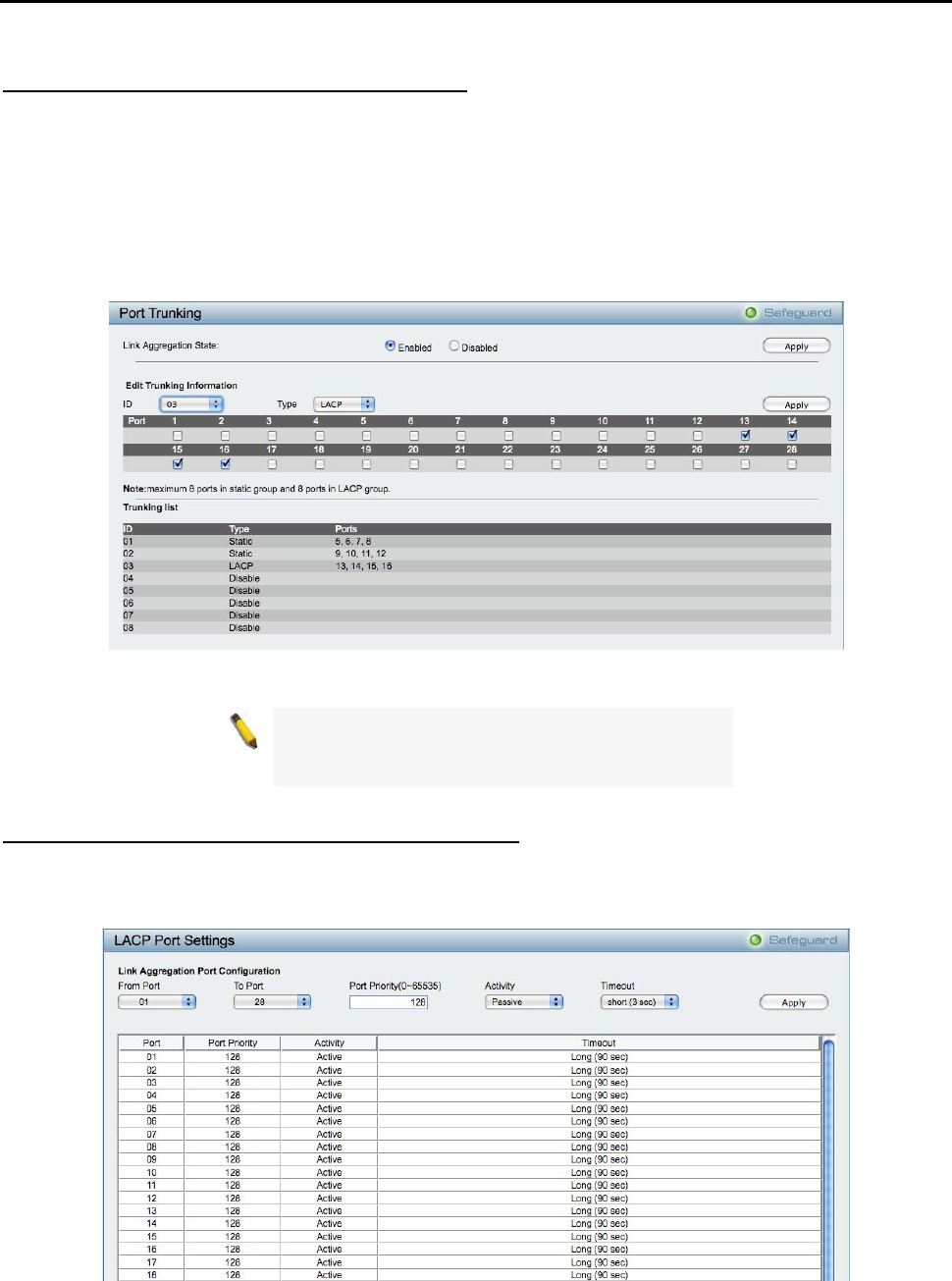
5 Configuration D-Link Web Smart Switch User Manual
Configuration > Link Aggregation > Port Trunking
The Trunking function enables the combining of two or more ports together to increase bandwidth. Up to
eight Trunk groups may be created, and each group can be consisted of up to eight ports. Select the ports to
be grouped together, and then click Apply to activate the selected Trunking groups. Two types of link
aggregation can be selected:
Static - Static link aggregation.
LACP - LACP (Link Aggregation Control Protocol) is enabled on the device. LACP allows for the
automatic detection of links in a Port Trunking Group.
Disable - Remove all the member in this trunk group.
Figure 72 – Configuration > Link Aggregation > Port Trunking
NOTE: Each combined trunk port must be
connected to devices within the same VLAN
group.
Configuration > Link Aggregation > LACP Port Settings
The LACP Port Settings is used to create port trunking groups on the Switch. The user may set which ports
will be active and passive in processing and sending LACP control frames
Figure 73 – Configuration > Link Aggregation > LACP Port Settings
From Port: The beginning of a consecutive group of ports may be configured starting with the selected port.
To Port: The ending of a consecutive group of ports may be configured starting with the selected port.
Port Priority (0-65535): Displays the LACP priority value for the port. Default is 128.
Activity: There are two different roles of LACP ports:
4
4
1
1


















